
| Publisher: | Black Cat/Grove Press | |
| Genre: | Small Town & Rural, Satire, Literary, Fiction | |
| ISBN: | 9780802147516 | |
| Pub Date: | December 2019 | |
| Price: | $16 |
| Starred | Fiction |
by Perumal Murugan, trans. by N. Kalyan Raman
In 2015, Indian author Perumal Murugan left his writing career after right-wing Hindu groups decried his novel One Part Woman as insulting to Hindu women. After the Madras High Court defended his right to freedom of expression, Murugan once again took up the figurative pen to produce this fable. "I am fearful of writing about humans," Murugan confesses in the preface to the original Tamil edition. Although the admission sounds like a loss of confidence after the attempts to censor his writing, he proceeds to deliver a wholly human story wrapped up in the person of an orphaned black goat.
So tiny that strangers mistake her for a kitten, the goat kid Poonachi comes into an old couple's lives when a mysterious giant of a man presses her on them. Later, the old man will claim the demon Bakasuran gave her to him, but at first, he and his wife focus their energy on keeping the kid alive. Their nanny goat refuses to nurse her, and Poonachi is attacked one night by an unseen predator. However, the kid survives and becomes the old woman's companion.
As the story progresses, its sophistication and maturity evoke Animal Farm. Poonachi's owners live under an inept bureaucracy, adding satirical humor for readers but hardship for the characters. Though dappled with moments of beauty and joy, Poonachi's days are rife with tragedy and exploitation. Translated by N. Kalyan Raman, this earthy tale is as emotionally affecting as any human-centered drama. The Story of a Goat is a frank exploration of oppression, greed, love and what good can be made of even the most meager life. --Jaclyn Fulwood, blogger at Infinite Reads
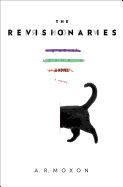
| Publisher: | Melville House | |
| Genre: | Sagas, Magical Realism, Fantasy, Fiction, Action & Adventure | |
| ISBN: | 9781612197982 | |
| Pub Date: | December 2019 | |
| Price: | $29.99 |
| Fiction |
by A.R. Moxon
Unconventional, self-proclaimed priest Julius is faced with far more eccentric parishioners than he bargained for when he takes up his ill-earned mantle as their leader. He and his gang of misfits reside on Loony Island, an industrial wasteland that is getting both more dangerous and more ridiculous with each passing disaster, including the recent release of patients from a psychiatric hospital. A violent and rollicking chase begins for possession of an all-powerful instrument that is capable of controlling everyone and everything. In response to this existential dread, the characters of A.R. Moxon's debut novel, The Revisionaries, become increasingly aware of themselves as fictional characters or as postmodern figures that are always at the whim of an inventor, author, god or whatever holds control over their lives.
To attempt a summary of this work feels largely beside Moxon's point. The plot luxuriates in illustrating the profound absurdities of fictionality. The real enjoyment of reading this novel is getting lost in its characters' antics and its philosophical challenges to the practice of novel-writing as an immersive, self-forgetting, but ultimately unreal experience. Like Gordy, whose unstable physical appearance begins the novel, the world of The Revisionaries flickers in and out of existence for readers, giving them an uncanny but nonetheless entertaining awareness that this is a real, material book they are reading, filled with characters who exist only within its physical boundaries. Atmospheric, darkly funny and unpredictable, Moxon's novel, like a darkly contemporary, adult version of Alice's Adventures in Wonderland, asks readers to attempt to make sense of its eerie, thought-provoking nonsense. --Alice Martin, freelance writer and editor
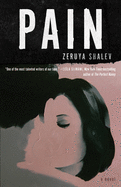
| Publisher: | Other Press | |
| Genre: | Women, Family Life, Marriage & Divorce, Fiction, Jewish | |
| ISBN: | 9781590510926 | |
| Pub Date: | November 2019 | |
| Price: | $17.99 |
| Fiction |
by Zeruya Shalev, trans. by Sondra Silverston
It's been 10 years since Iris was injured in a suicide bombing; she required three surgeries and continues to need pain pills. Even so, the sympathetic, searching protagonist of Israeli author Zeruya Shalev's novel Pain would say that the biggest trauma of her life occurred nearly 30 years earlier, when Eitan, her true love, cast her aside.
Iris is now married and the principal of a thriving elementary school in Jerusalem. During an appointment at a pain clinic, she encounters Eitan: he's the pain specialist who examines her. They haven't seen each other since their breakup, and he gives no sign that he recognizes her; then again, Iris's husband is in the room with them. She returns alone to the clinic to see Eitan, and they begin an affair that puts her accident in a different light: "If it hadn't been for that catastrophe, they would not have met again."
Any synopsis risks giving the reader the mistaken impression that Pain is a sudsy melodrama. Shalev, an Israeli writer, uses the novel's plot points as pegs for her heady themes: the ripple effect of disaster, the past's chokehold on the present. Pain is over-reliant on words like "trembling" and "shaking," and some readers may find themselves in solidarity with the woman who tells Iris to stop meddling in her adult daughter's life. (Iris suspects that her daughter's troubles stem from the young woman's intuition that Iris doesn't sufficiently love her husband, but how can Iris truly love any man who isn't Eitan?) Regardless, Iris is a complex, singular character who has the virtue of usually being right, to readers' terrific satisfaction as well as Iris's own. --Nell Beram, author and freelance writer
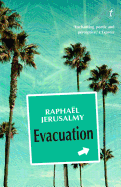
| Publisher: | Text Publishing | |
| Genre: | Cultural Heritage, Literary, Political, Fiction, Jewish | |
| ISBN: | 9781925603378 | |
| Pub Date: | December 2019 | |
| Price: | $14.95 |
| Fiction |
by Raphaël Jerusalmy, trans. by Penny Hueston
Conversations in vehicles offer a particular intimacy: occupants have no choice but to be present. In Evacuation by Raphaël Jerusalmy, translated from the French by Penny Hueston, a car's interior provides the opportunity for a young man to reveal his experiences during an evacuation of Tel Aviv, and for Jerusalmy, a former member of the Israeli military intelligence service, to show people upholding life and art in the midst of warfare.
The novella opens with Naor, an aspiring filmmaker, talking to his mother at the beginning of a drive. His voice serves as the primary narration throughout the book, as it's his story that unfolds. Typical small talk (put on your seatbelt, sorry about that turn) precedes his unexpected comment: "Don't be sad, Mum." With this remark the reader enters the car, too, and listens to Naor, as he drives, explain what happened during a recent military attack on Tel Aviv.
Naor and his girlfriend, Yaël, had planned to accompany Saba, his grandfather, on a bus to the countryside during the mandatory evacuation of the city. At the last minute, Saba gets off the bus and refuses to leave. Naor and Yaël follow him, initially to change his mind, but when he refuses, they decide, in an act of "dissidence," to defy the evacuation order.
Evacuation is no typical war novel: spare yet compelling, and extraordinarily moving in unexpected places, it challenges those who glance impassively at a televised war to step into the experience of those nearby. --Cindy Pauldine, bookseller, the river's end bookstore, Oswego, N.Y.
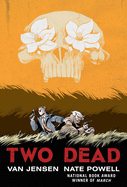
| Publisher: | Simon & Schuster/Gallery 13 | |
| Genre: | Historical Fiction, Crime & Mystery, Literary, Comics & Graphic Novels | |
| ISBN: | 9781501168956 | |
| Pub Date: | November 2019 | |
| Price: | $19.99 |
| Graphic Books |
by Van Jensen, illust. by Nate Powell, Erin Tobey
Cycles of violence dominate the graphic novel Two Dead--whether at home or on so-called enemy territory. Traumatized by a World War II friendly-fire fatality, Sergeant Gideon Kemp returns stateside, eschews his law degree and begins his police career in 1946 in his hometown of Little Rock, Ark. He's asked by the city's higher-ups--including the mayor and a councilman--to combat the Mafia's chokehold while keeping an eye on police chief Abraham Bailey, whose unorthodox practices have the power elite on tenterhooks. Thrown together, often in the same dangerously speeding squad car, both men wrestle personal demons potentially more threatening than the escalating crime. Meanwhile, on the other side of the segregated city, two African American brothers, Jacob and Esau, must choose between preserving their family bond or upholding the law: one is a decorated veteran facing the same blatant racism he had hoped to escape after valiantly serving his country, the other a hardened criminal who readily flaunts safety for the promise of illicit rewards.
"Two Dead is a work of fiction but one inspired by truths... its tragic events are largely factual," writer Van Jensen notes in his afterword. As a former Arkansas Democrat-Gazette crime reporter, Jensen's access to true stories guides his narrative, "brought to life" by National Book Award-winning artist Nate Powell (March series). As Jensen reveals history, Powell's strikingly dynamic style proves ideal for enhancing action as commonplace as lighting a match, as riveting as a middle-of-the-night chase that goes off track. With effecting resonance, both artist and author show and tell how, despite the book's 70-plus-years timestamp, inhumane brutality caused by war, racism and those in power--especially the police--is no relic of the past. --Terry Hong, Smithsonian BookDragon
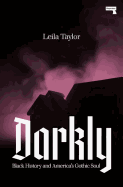
| Publisher: | Repeater | |
| Genre: | Biography & Autobiography, General, Cultural, Ethnic & Regional, Essays, Political Science | |
| ISBN: | 9781912248544 | |
| Pub Date: | November 12, 2019 | |
| Price: | $14.95 |
| Starred | Social Science |
by Leila Taylor
Branches weeping with Spanish moss, white front porches stained with age and mold, foggy swamps thick with humidity and sludge: in Darkly, Leila Taylor takes a closer look at the aesthetics of horror that have captivated and terrified the U.S. for centuries. In doing so, she uncovers what is particularly American about each and every strand of the American Gothic, whether framed within a Southern cemetery, a haunted Northern aristocratic mansion or an isolated and aging Midwestern farmhouse. Told as part memoir, part literary analysis, part historical scholarship, Darkly considers darkness not only as an aesthetic treatment but as a stylistic encapsulation of very real racial violence, the existential meaning of fear, and the simultaneous discomfort with and embrace of otherness upon which the U.S. has built its cobwebbed foundations.
From the start, Taylor's narrative voice is witty and deeply engrossing. Conversational in format, this book thinks critically about what fascinates readers and what darkness that spectacle may be obscuring. Taylor skips from the performative elements of ghost tours, through her childhood and on to critical close readings of everything from Edgar Allan Poe's short stories to Toni Morrison's Beloved. While an inspection of blackness runs through all of her analyses, the real brilliance of the way the book unfolds is in its peeling back of the various layers that define that very blackness. "Black," Taylor argues more than once, "contains multitudes, literally." Darkly not only illuminates the many fears inherent in the American gothic, but also resituates what has been traditionally coded as the white consumption of horror to consider what it means to view the genre from within the darkness itself. --Alice Martin, freelance writer and editor

| Publisher: | Tachyon Publications | |
| Genre: | Science Fiction & Fantasy, Literary Criticism, Science, Literary Collections, Essays | |
| ISBN: | 9781616963194 | |
| Pub Date: | November 2019 | |
| Price: | $16.95 |
| Essays & Criticism |
by Peter Watts
The world is on fire, and Peter Watts wants everyone to know it. In this collection of revised and updated writings from his blog, Watts is loud, smart, abrasive and refreshingly candid as he traverses an array of topics with philosophical and scientific savvy, unperturbed by whom he may offend along the way. Some pieces cover more universal topics: the climate change crisis, unchecked police brutality, censorship, the state of modern literature and its readers, government-instigated violence. Balancing out the heavy and often fatalistic essays, however, are more personal writings about his brother's death; introspection on his own successes and failures in science fiction; his first hallucinogenic experience, as a middle-aged man; and his unlikely survival of flesh-eating disease.
Former marine biologist and Hugo Award-winning author Watts (Starfish, Echopraxia) tackles scientific publications and worldbuilding in zombie television shows with equal vigor and is not afraid of speaking his mind, controversial as his opinions might be. He's angry at "the way we've f**ked up the planet... at the idiotic self-adulation of Human behaviors" and offers not only problems but solutions, some rather extreme: see, "Zika as the potential savior of humanity" and "when it comes to climate change the optimists have always been wrong and the pessimists have always been too optimistic." Those seeking peace of mind and a sunny outlook on life will not find much of them here, but Watts still manages to appreciate moments of good mixed in with the bad. As he says, "Even my most bitter diatribes might not be totally fatalistic." Watts's unflinching honesty, both brave and harsh, is what drives the collection, and whether readers agree with him or not, he certainly knows how to start a conversation. --Jennifer Oleinik, freelance writer and editor
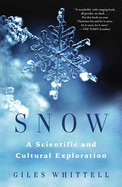
| Publisher: | Atria | |
| Genre: | Nature, Weather, Meteorology & Climatology, Earth Sciences, Science, Anthropology, Cultural & Social, Social Science | |
| ISBN: | 9781982105471 | |
| Pub Date: | November 2019 | |
| Price: | $25 |
| Science |
by Giles Whittell
When Giles Whittell's mother read him Laura Ingalls Wilder's Little House in the Big Woods, it made an instant, indelible impression, like "air conditioning in book form" for an eight-year-old in the thick of a Nigerian summer. As an adult, Whittell's fixation gave rise to Snow, a comprehensive look at the science behind, impact of and somewhat surprisingly vast cultural influence of flakes. "Snow irrigates. It gives skiers something to slide on. It covers mountains... like thick icing. It is the only thing on Earth that brings quiet to New York City, and it makes curlicues out of molasses."
From this soul-felt introduction, U.K. journalist Whittell shovels into heady science, including the mystery of snow's formation. "We can edit genes and create membranes a single atom thick, but we still don't know how snowflakes grow." Not that we aren't trying. Machines at Caltech create "the world's most perfect artificial snowflakes" for study. Who knew dust was a key? But why always six sides? The complex answer lies in angles, atoms, molecules and temperature.
Further evidence of the extraordinary nature of snow follows in chapters about snow's impact on the natural world (how polar bears came to be), culture (star of the most courageous stunt in cinema history) and transport (for survival and for chasing Olympic medals). Snow isn't all fun and games; it's big business, and a marker of seasons that some take for granted. Although our relationship with snow is "complicated and expensive," we must pay attention lest snow's retreat become irreversible. --Lauren O'Brien of Malcolm Avenue Review

| Publisher: | Blue Rider Press | |
| Genre: | Native American Studies, Sports & Recreation, Basketball, History, Social Science, Native American, Ethnic Studies | |
| ISBN: | 9780525534662 | |
| Pub Date: | November 2019 | |
| Price: | $28 |
| Sports |
by Michael Powell
"Nothing about a basketball season is easy. Neither is life," says Raul Mendoza, who has coached "rez ball" for four decades, the only living reservation coach with a state championship ring. He heads the Wildcats of Chinle High School, the largest school on the Navajo reservation in Apache County, Ariz.
In Canyon Dreams, sports journalist Michael Powell recounts time spent with the Wildcats during their quest for a championship. Powell was drawn to the story after living near Chinle 25 years earlier, where he entered a pickup game and ended up feeling that he'd been "caught in the wrong lane with Olympic marathon runners."
Powell merges the profile of Mendoza with that of his players and their environs, set against the backdrop of the community and Navajo history. "The grip of hoops on the Navajo psyche" is plain, and the pressure and hunger to win comes across as an insistent, immutable ache. Some 4,000 people live in Chinle. On game nights, 5,000 crowd the Wildcat Den, seated in a hierarchy as formalized as a royal court.
Mendoza's job is bigger than coaching. He counsels teenagers "perched on that precarious cliff wall" between adolescence and manhood, soon facing the decision of whether to leave their Navajo world. Survival is a question on either side, with reservation life marked by alcoholism, unplanned pregnancies, domestic abuse, suicide and troubling bureaucracy. Powell's immersion in the people and their traditions is heartfelt and lyrical, tied to the land and culture that leave kids to ponder "Can I leave this? I don't know yet. It's my puzzle." --Lauren O'Brien of Malcolm Avenue Review

| Publisher: | Tiller Press | |
| Genre: | Self-Help, Personal Growth, Travel, Anthropology, Cultural & Social, Essays & Travelogues, Social Science, Success | |
| ISBN: | 9781982131586 | |
| Pub Date: | November 2019 | |
| Price: | $26.99 |
| Travel Literature |
by Daniel Houghton
Why do people travel, and what do they get from it? Is it simply for adventure and new experiences, or perhaps a fear that they are missing out on something that everyone else does? Or are there deeper drives, and more meaningful gains to be achieved through exploring the world more fully?
These are some of the questions former CEO of Lonely Planet Daniel Houghton attempts to answer in this wide-ranging collection of Houghton's own insights and interviews with other avid travelers. After years of teaching people how to travel while running the world's biggest travel publisher, he attempts to help readers rediscover why they might be driven to do so. Wherever You Go includes interviews with notable people including Virgin Airlines founder Richard Branson, former U.S. Navy submarine commander Captain L. David Marquet, sailor Laura Dekker and travel writer Noo Saro-Wiwa. Between the interviews and his own anecdotes, Houghton provides a meditation on the function of travel in today's world, and how people can get the most from it--whether that is stepping outside of routines, dealing with unexpected hiccups or being prepared to eat just about anything.
Essentially, Houghton's book turns on the following point: "Travel is the single greatest thing you can do to expand your mind. When you go outside your comfort zone, you have no choice but to observe and learn about other ways of life." This is what he, and those he interviews, encourages readers to do more of--with respect, open minds and a willingness to grow from the experience. --Michelle Anya Anjirbag, freelance reviewer
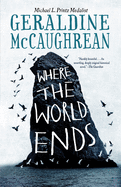
| Publisher: | Flatiron Books | |
| Genre: | Survival Stories, Europe, Boys & Men, Young Adult Fiction, Historical, Action & Adventure | |
| ISBN: | 9781250225498 | |
| Pub Date: | December 2019 | |
| Price: | $18.99 |
| Starred | Children's & Young Adult |
by Geraldine McCaughrean
Winner of the 2018 Carnegie Medal, Geraldine McCaughrean's Where the World Ends is a gripping tale, set in 1727, about 12 men and boys clinging to life after being abandoned on a sheer vertical outcrop of rock in the frigid Atlantic Ocean.
Birds are the lifeblood of the 100 or so residents of Hirta island in the remote Scottish archipelago of St. Kilda. Every summer, a group of men and boys is dropped off at Warrior Stac, a steep rock column four miles from Hirta. For a few weeks, they live in inhospitable crevices and caves, descending on ropes from cliffs to harvest birds--waterfowl provide them with food, fuel and feathers for the winter ahead. At night, the caves are lit only by "the rigid oily little bodies of dead storm petrels threaded through with tarry wicks." To the group's growing dismay, weeks go by with no returning boat. When a devout boy has a vision that the end of the world has come and everyone but them has been taken up to heaven, some in the group panic. Others refuse to believe, and focus on surviving and signaling for help.
Based on a true story, Where the World Ends stuns with its dark narrative and haunting visual imagery: "Around them on every crevice of the rock walls, headless petrels burned, the wicks encircled by haloes of flame, as though a band of skinny little angels was peering down at them." Including illuminating back matter, like a glossary, and an illustrated list of the birds of 18th-century St. Kilda, McCaughrean's (The White Darkness; Peter Pan in Scarlet) work explores what happens when the everyday-ordinary turns disastrously extraordinary. --Emilie Coulter, freelance writer and editor

| Publisher: | Sourcebooks Fire | |
| Genre: | Friendship, Magical Realism, Fantasy, Contemporary, Social Themes, Young Adult Fiction, LGBT | |
| ISBN: | 9781492682660 | |
| Pub Date: | December 2019 | |
| Price: | $17.99 |
| Children's & Young Adult |
by Ryan La Sala
Ryan La Sala's debut, Reverie, is a darkly imagined, riveting fantasy that delves into the unlimited potential of getting lost in one's dreams.
When Kane wakes in the hospital, he can't remember the accident. Apparently, he rammed his dad's car into an old mill--"which exploded on impact"--and needed to be pulled from the river. The police think the whole thing was deliberate, suicidal even, and they want answers. Kane undergoes a psych evaluation, where the dazzling Dr. Poesy warns him that his "story takes place within a much larger story"--a story that is bigger than the East Amity Police investigation and potentially dangerous. At school, Kane learns that he has a small, close-knit group of friends who call themselves "The Others"; they, like the experience of the accident, have "been cut from his memory entirely." Kane, seeking information, eavesdrops on them debating how to handle him and his missing powers. Another "reverie" will be happening soon, they say, and it's Kane who has always unraveled them. This time, the group agrees to keep him away. Furious and needing to learn more, Kane seeks out the reverie and discovers a "crazy fantasy" involving "a subterranean civilization that worships a god called the Cymo."
In East Amity, where dreams actually do become real, readers feel the tangible danger as the fantasies spin out of control. Like so many others in Reverie, Kane wants to believe he can escape into the "intoxicating potential" of dreams. But, before the end of this thrilling narrative, Kane must either come to terms with fighting "for a reality that fails so many, so often" or, instead, fight to change it. --Lynn Becker, blogger and host of Book Talk, a monthly online discussion of children's books for SCBWI
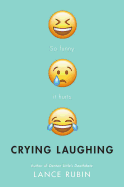
| Publisher: | Knopf | |
| Genre: | Humorous, Death, Grief, Bereavement, General, Social Themes, Young Adult Fiction, New Experience | |
| ISBN: | 9780525644675 | |
| Pub Date: | November 2019 | |
| Price: | $17.99 |
| Children's & Young Adult |
by Lance Rubin
Lance Rubin, a comedian and author, provides a fresh take on angsty teen identity-seeking with a side of gut-wrenching family trauma in Crying Laughing.
The most important rule of improv, as 15-year-old Winnie Friedman learns in the first meeting of her school's improv troupe, is "Yes and." In other words, players accept everything their scene partners do, then add something to the scene to move it forward. She soon also learns that although supporting your partner (no matter what) outside of improv seems like a good idea, sometimes real life is more complicated. When Winnie's father, a former comedian, is diagnosed with ALS, she willingly goes along with his efforts to use humor to lighten the family's pain. But perhaps her seemingly humorless mother is right: what they're really doing is not taking the situation seriously. As Winnie struggles to succeed in improv and show people outside her immediate circle that she is talented, dynamics are shifting with her best friends, identical twins Leili and Asmaa, and a new relationship with school funny boy, Evan, is confusing and frustrating. Winnie badly wants to out herself as the hilarious person she knows she is, but anxiety keeps knocking her down.
Rubin's (Denton Little's Deathdate) restraint is admirable; where a lesser writer might give Winnie a rousing success in her big performance, Rubin takes the path less triumphant. Winnie truly is funny, so her awkward failures onstage as she tries too hard, worries about her dad, wonders about her insecure boyfriend and stresses that she will bomb as much as she did during her bat mitzvah performance are excruciating and so sympathetic. Her courage and hard-earned self-reflection will have readers cheering, crying and, yes, laughing. --Emilie Coulter, freelance writer and editor